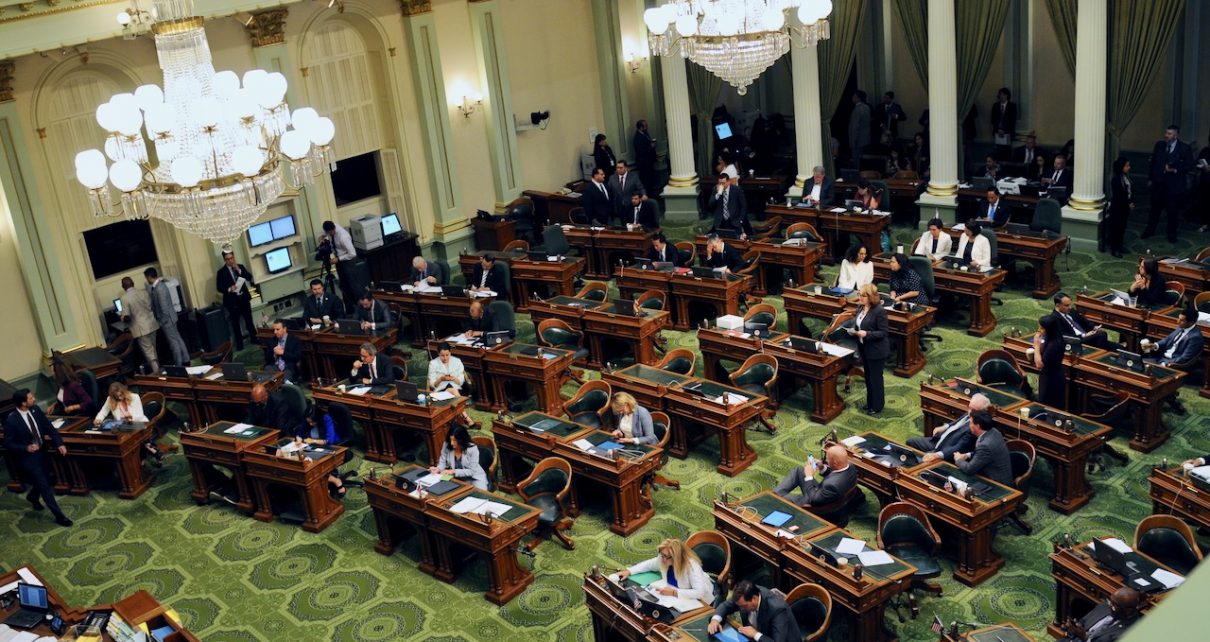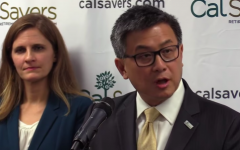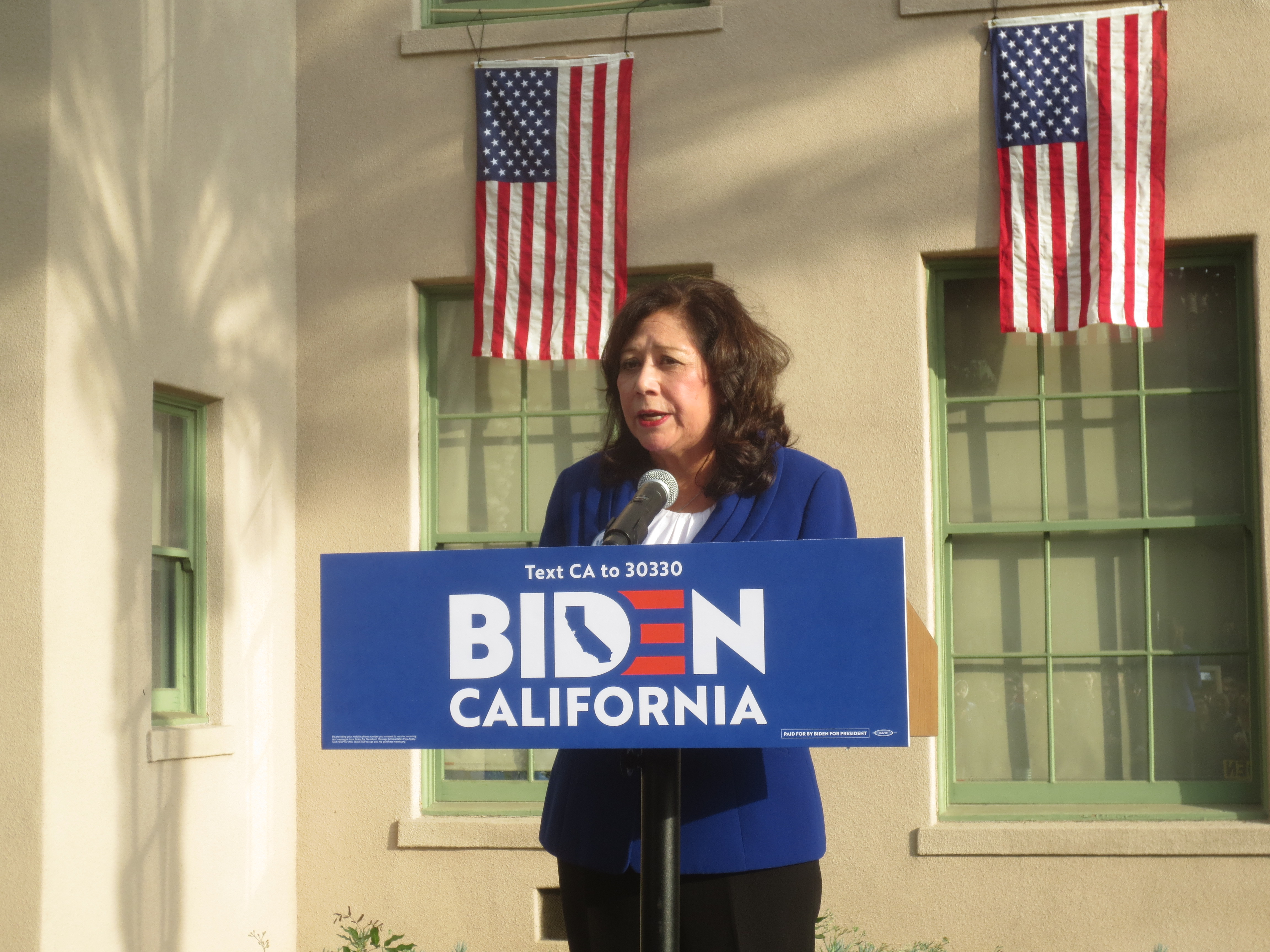
California State Assembly Chamber. (Photo: Kevin Sanders for California Globe)
Overview of ‘CalSavers’ Act
The Act is for the purpose of promoting greater retirement savings for California private employees
By Chris Micheli, August 13, 2022 9:22 am
California has a number of formal acts in statute. Government Code Title 21 provides the CalSavers Retirement Savings Trust Act, which is contained in Sections 100000 to 1000050. Title 21 was added in 2020 by Chapter 21.
Section 100000 provides definitions for the following terms: “board”; “CalSavers Retirement Savings Program”; “eligible employee”; “eligible employer”; “IRA”; “myRA”; “participating employer”; “payroll deposit retirement savings arrangement”; “trust”; and, “vendor.”
Section 100002 creates within state government the CalSavers Retirement Savings Board, which consists of nine members, with the Treasurer serving as chair. All members of the board serve without compensation. Members of the board are reimbursed for necessary travel expenses incurred in connection with their board duties.
Section 100004 established a retirement savings trust known as the CalSavers Retirement Savings Trust to be administered by the board for the purpose of promoting greater retirement savings for California private employees in a convenient, voluntary, low-cost, and portable manner. After sufficient funds are made available for this title to be operative, the trust, as a self-sustaining trust, shall pay all costs of administration only out of moneys on deposit therein.
Section 100008 requires the CalSavers Retirement Savings Program to include, as determined by the board, one or more payroll deduction IRA arrangements. Section 100010 provides the board to have the power and authority to do enumerated activities. In addition, the board is required to adopt regulations it deems necessary to implement this title consistent with the Internal Revenue Code and regulations issued pursuant to that code to ensure that the program meets all criteria for federal tax-deferral or tax-exempt benefits, or both. The board may delegate this rulemaking authority to the executive director by resolution.
Section 100012 provides the board with the power and authority: Cause the retirement savings program or arrangements established under the program to be designed, established, and operated, in a manner consistent with all of the required criteria.
Section 100014 requires the board to design and disseminate to employers an employee information packet that shall be available in an electronic format. The packet must include background information on the program and appropriate disclosures for employees. Section 100016 requires the board to establish a clearinghouse on its website and a vendor registration process.
Section 100018 requires registration to be offered to vendors once annually, and renewal of registration must be required at least once every five years thereafter for vendors that wish to continue to participate in the Retirement Investments Clearinghouse. The board is required to provide public notice prior to the initial registration, annual registration, and registration renewal periods.
Section 100020 authorizes the board to remove a vendor from the registry if the vendor submits materially inaccurate information to the board, does not remit assessed fees within 60 days, or fails to submit notice of material changes to its registered investment products. Vendors found to have submitted materially inaccurate information to the board are allowed 60 days to correct the information. The board is required to remove a vendor in specified situations.
Section 100022 requires the board to maintain the Retirement Investments Clearinghouse containing the information required in Section 100016 about the retirement investment products offered by each registered vendor and objective comparisons of vendors and types of products. The clearinghouse must include information on investment performance based upon the investment’s average annual total return as measured by a nationally recognized rating service selected by the board for standard periods of time of not less than one year.
Section 100026 provides that a vendor may not charge a fee associated with a registered product that is not disclosed. Section 100028 specifies that the actual cost of establishing the vendor registration system and the Retirement Investments Clearinghouse must be borne equally by registered vendors, based on the total number of registered vendors. Each registered vendor is to pay a one-time establishment fee equal to a pro rata share of the establishment costs charged to vendors that register with the board prior to the close of the initial registration period, as determined by the board.
The actual cost of maintaining the vendor registration system and the Retirement Investments Clearinghouse, and the costs associated with publicizing the availability of the clearinghouse to eligible employers, is borne equally by registered vendors, based on the total number of registered vendors. Each registered vendor must pay a renewal fee equal to a pro rata share of the maintenance costs, as determined by the board.
Section 100030 specifies that the board and the program, and its officers and employees, are not responsible for, and are not to be held liable for, the adequacy of the information provided by the participating vendors and contained in the clearinghouse. The clearinghouse maintained by the board serves only to provide information supplied by the participating vendors for the consideration of the selection of retirement investment products.
Section 10032 provides that any employer may choose to have a payroll deposit retirement savings arrangement to allow employee participation in the program under the terms and conditions prescribed by the board.
Eligible employers that do not offer a retirement savings program must have a payroll deposit retirement savings arrangement to allow employee participation in the program. Each eligible employee is to be enrolled in the program unless the employee elects not to participate in the program. An eligible employee may elect to opt out of the program by making a notation on the opt-out form or by contacting the program by telephone.
Unless otherwise specified by the employee, a participating employee must contribute 3 percent of the employee’s annual salary or wages to the program. By regulation, the board may adjust the contribution amount set no less than 2 percent and no more than 5 percent and may vary that amount within that 2 percent to 5 percent range. The board may implement annual automatic escalation of employee contributions.
Section 100033 requires the CalSavers Retirement Savings Board to have the power and duties necessary to administer the enforcement of employer compliance with this title. The board also must send notices of penalty application to employers.
Section 100034 does not impose any liability on employers for an employee’s decision to participate in, or opt out of, the program, or for the investment decisions of employees whose assets are deposited in the program. In addition, employers are not a fiduciary, or considered to be a fiduciary, over the trust or the program.
The program is a state-administered program, not an employer-sponsored program. If the program is subsequently found to be preempted by any federal law or regulation, employers are not liable as plan sponsors. An employer does not bear responsibility for the administration, investment, or investment performance of the program. And, an employer is not liable with regard to investment returns, program design, and benefits paid to program participants.
Section 100036 does not impose any liability on the state for the payment of the retirement savings benefit earned by program participants pursuant to this title. The state, and any of the funds of the state, does not have any obligation for payment of the benefits arising from this title.
Section 100038 requires the board to submit an annual audited financial report, prepared in accordance with generally accepted accounting principles, on the operations of the trust by August 1 to the Governor, the Controller, the State Auditor, and the Legislature. The annual audit is to be supplemented by the following information prepared by the board.
Section 100043 prohibits the board from operating the program if the IRA arrangements offered fail to qualify for the favorable federal income tax treatment ordinarily accorded to IRAs under the Internal Revenue Code, or if it is determined that the program is an employee benefit plan under the federal Employee Retirement Income Security Act.
Section 100044 provides that this title is to be construed liberally in order to effectuate its legislative intent. The purposes of this title and all of its provisions with respect to the powers granted shall be broadly interpreted to effectuate that intent and purposes and not as to any limitation of powers.
Section 100046 states that the CalSavers Retirement Savings Program is approved by the Legislature and implemented as of January 1, 2017. The board is required to consider and utilize specified parameters in designing the program.
Section 100048 allows the board to adopt regulations to implement this title. Section 100049 provides that a payroll deposit IRA arrangement offered pursuant to the CalSavers Retirement Savings Program has the same status as, and be treated consistently with, any other IRA for the purpose of determining eligibility or benefit level for a program that uses a means test. Section 100050 specifies that funding for startup and first-year administrative costs may be appropriated from the General Fund in the annual Budget Act.
- Statewide Child Support Registry - January 2, 2026
- Foreign Country Money Judgments - January 2, 2026
- How Many Bills Are on the Inactive Files? - January 1, 2026





6 thoughts on “Overview of ‘CalSavers’ Act”